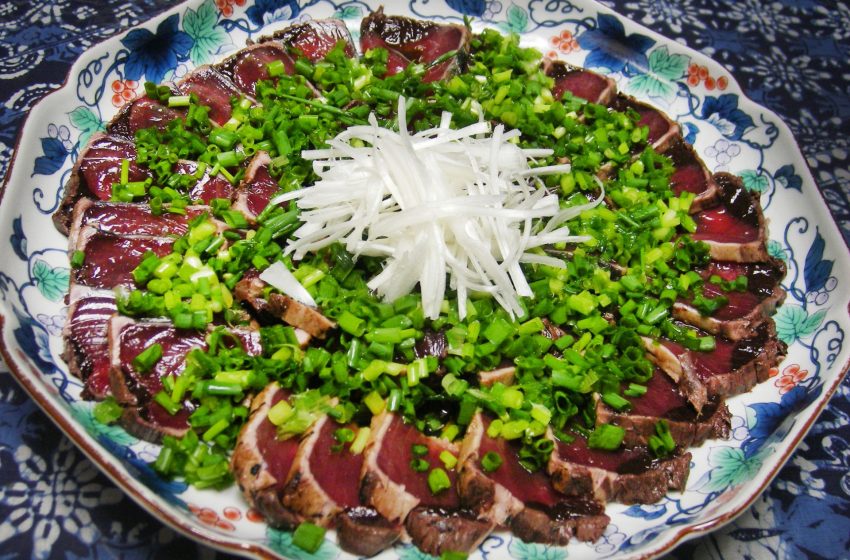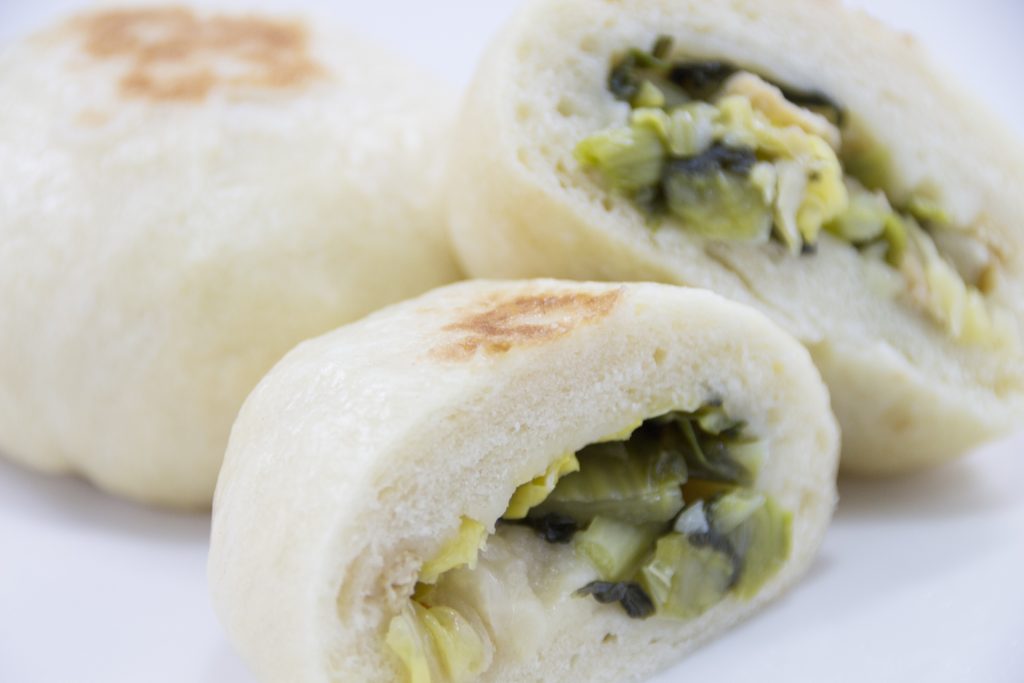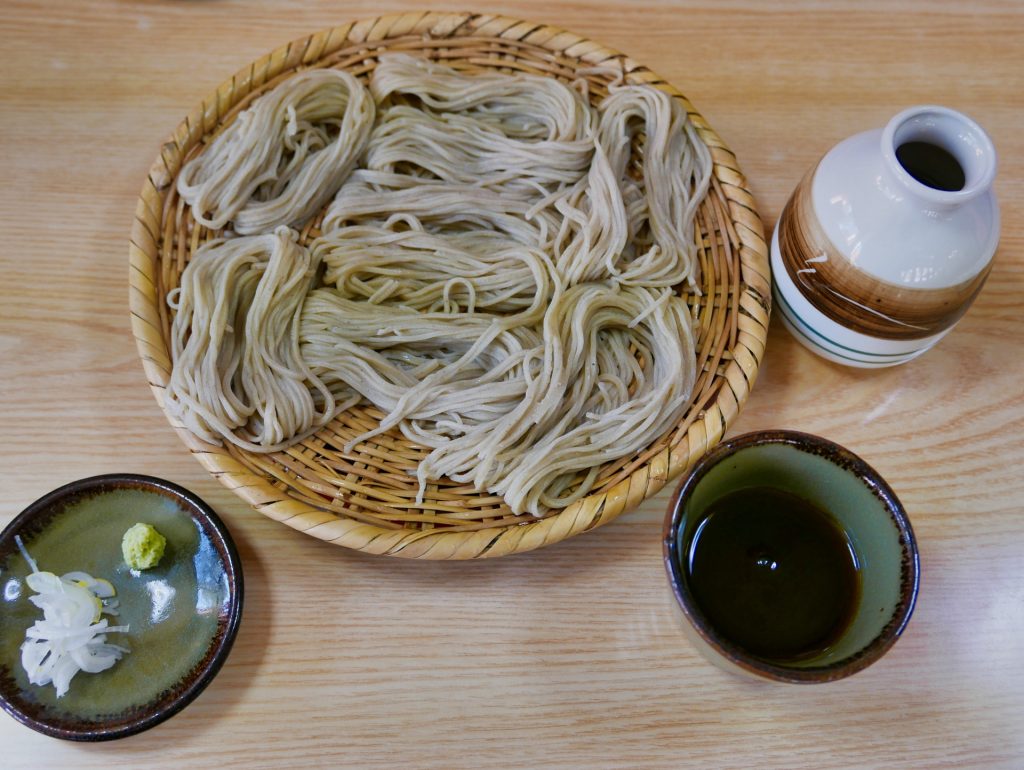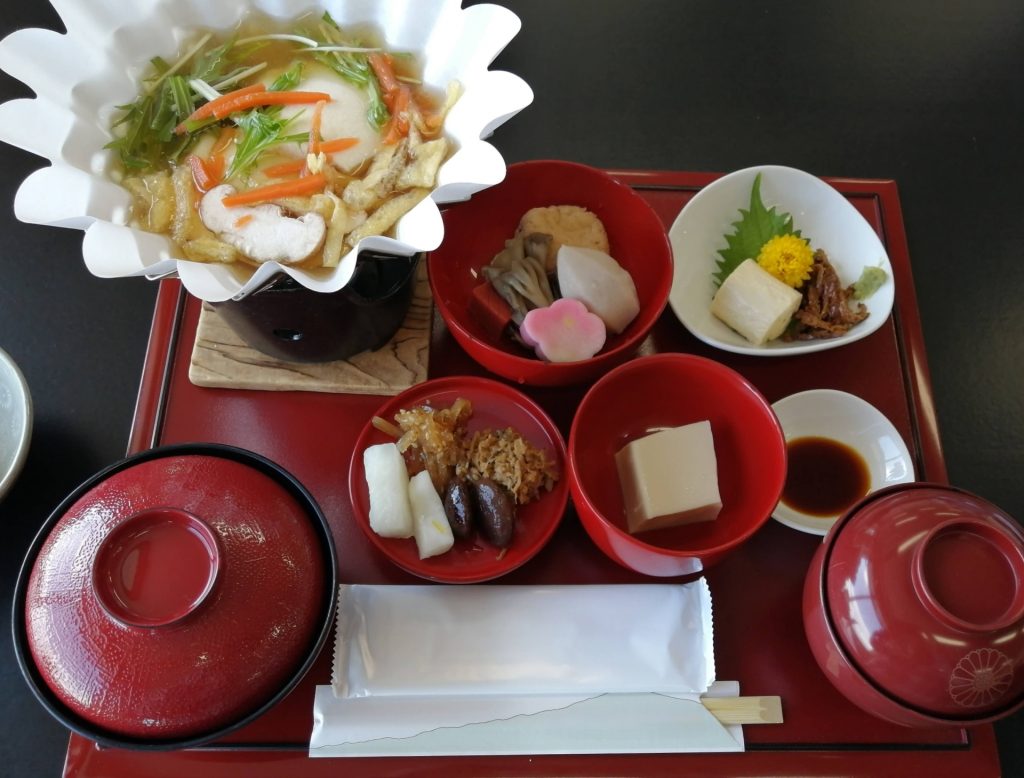
Katsuo no Tataki: A Taste of Japan’s Culinary Tradition
In the vast ocean of Japanese cuisine, where delicate flavors and meticulous preparation reign supreme, there exists a dish that captures the essence of both the sea and the skillful art of Japanese cooking: Katsuo no Tataki. This traditional dish, made from seared bonito (skipjack tuna), is a beloved delicacy, especially in the coastal regions of Japan. Let’s explore the origins, preparation, and enjoyment of Katsuo no Tataki, a testament to the simple yet profound flavors of Japanese gastronomy.
Origins of Katsuo no Tataki
Katsuo no Tataki has its roots in the Kochi Prefecture on Shikoku Island, where it is said to have originated. The fishermen of this coastal region developed the technique of lightly searing bonito over a straw fire, imparting a smoky flavor to the fish, which was then seasoned with local ingredients like ginger, garlic, and scallions. This method not only enhanced the flavor of the fish but also extended its shelf life, a crucial factor in the days before refrigeration.
The Art of Preparing Katsuo no Tataki
The preparation of Katsuo no Tataki is both an art and a celebration of the bonito’s freshness. The process begins with a fresh bonito fillet, which is briefly seared over an open flame or hot pan. The key is to char the exterior while keeping the interior raw, preserving the natural flavors and textures of the fish. Once seared, the bonito is immediately chilled to stop the cooking process and then thinly sliced.
Seasoning plays a crucial role in Katsuo no Tataki. The sliced bonito is typically garnished with finely chopped scallions, grated ginger, and garlic. It is served with a dipping sauce made from soy sauce and citrus juice, often yuzu or sudachi, which adds a refreshing acidity that complements the smoky, rich flavor of the fish.
Enjoying Katsuo no Tataki
Katsuo no Tataki is more than just a dish; it’s an experience. It is often enjoyed as an appetizer or a main course, accompanied by steamed rice and Japanese sake or beer. The contrast of the seared exterior and the tender, raw interior, along with the interplay of smoky, tangy, and umami flavors, makes Katsuo no Tataki a favorite among those who appreciate the subtleties of Japanese cuisine.
Cultural Significance
Beyond its delightful taste, Katsuo no Tataki holds cultural significance in Japan, particularly in regions where bonito fishing is a way of life. The dish celebrates the seasonal bounty of the sea and showcases the Japanese ethos of respecting ingredients by preparing them in ways that highlight their natural beauty and flavor.
Conclusion
Katsuo no Tataki stands as a symbol of Japanese culinary tradition, embodying the principles of simplicity, seasonality, and respect for ingredients. This dish offers a glimpse into the rich tapestry of flavors and techniques that define Japanese cuisine, inviting both newcomers and connoisseurs to explore its depths. Whether savored in a seaside town in Kochi or at a Japanese restaurant anywhere in the world, Katsuo no Tataki is a culinary journey worth taking, one smoky, savory bite at a time.




